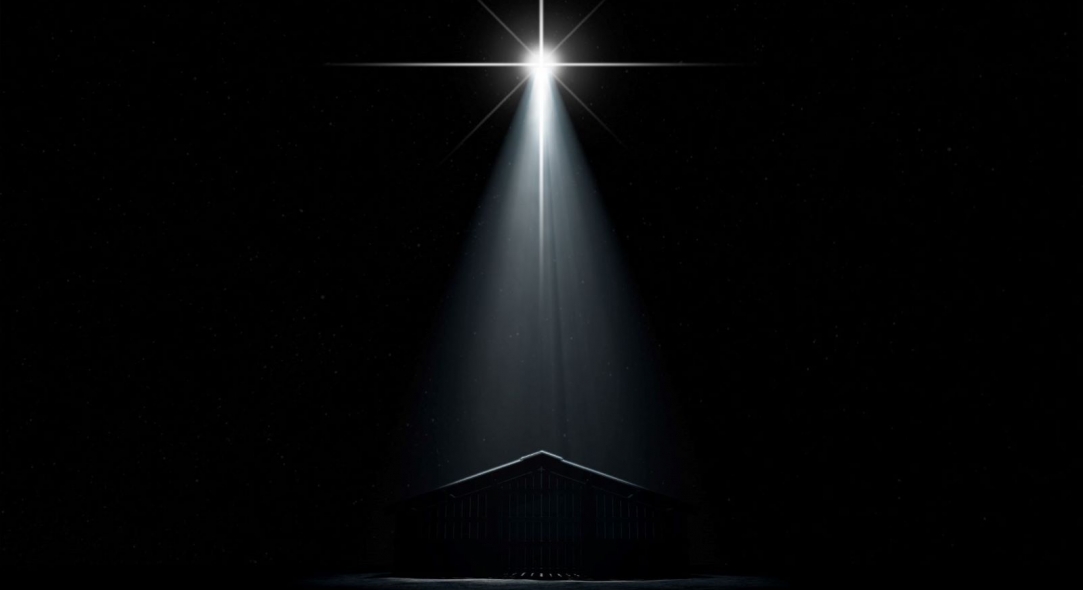Advent Prayers
Join me in praying for the 100 youth delegates of COP28 - and as we pray for them, pray that your own mindset might be transformed.
Read More

I will give you the treasures of darkness and riches hidden in secret places…
(Isiah 45:3)
It is going to be a dark Christmas. This year, Christmas will fall in the lunar cycle when we are on the cusps of a New Moon—when the moon is not visible in the night sky. Most of us will rebuke the darkness by turning on our Christmas lights, a few extra luminations joining a city saturated with artificial light.
Maybe, it would be helpful to pause for a moment and welcome the darkness.
In her book, Learning to Walk in the Dark, Anglican priest Barbra Brown Taylor invites us to learn to treasure darkness. Much of our Scripture is filled with dualistic images of light/darkness, where light is almost always a sign of God’s presence—indeed, the Gospel of John opens by speaking of Jesus as a light coming into a dark world and later in that same Gospel, Jesus says, “I am the light of the world.” And yet… that is only part of the truth revealed in Scripture.
Scripture also imagines God’s creative work beginning in the dark. The world was dark and formless when God’s wind first swept over it. Indeed, in the rhythm of creation in Genesis 1, God counts the days first by noting evening—“and there was evening and there was morning and it was good.” And often, it is not in the day but in the darkness that God shows-up in the world—appearing in dreams, parting waters to liberate slaves, appearing to Moses in “thick darkness.”
The ancient Hebrew prophets whose voices illuminate the Advent-Christmas season write to a people sitting in darkness. In the case of Isaiah, whose words we read in worship this morning, his people lived in a dark time. Their nation had been destroyed, their people taken captive, their temple smouldering in ruins. And yet, even in this darkness, Isaiah sees the hope of God at work—“I will give you treasures of darkness… I am the Lord… I form light AND create darkness.”
Did you ever notice, most of the story we celebrate in Advent-Christmas also took place in the dark. We imagine Mary and Joseph arriving to Bethlehem so late that the inns are full and they have to find refuge in a manger (likely a dark cave), angels appear to shepherds in the night and those same shepherds both arrive and depart the manger under the cloak of darkness, the Magi are guided not by the Sun, but by a star in the night, and Joseph is awakened by a dream to take his family and flee the wrath of Herod in the cloak of night.
That is how the Jesus story begins. The story also climaxes in the darkness of a burial cave before the light of dawn when the life of Jesus somehow defied death.
It turns out there are treasures to be found in the darkness. And I think this is important. Too often, we offer faith with all its brilliant light. That might work on good days, but too often our lives are marked by dark nights. Death come knocking on our settled lives. We find ourselves swamped by the shadows of war, broken politics, refugee crises, food insecurity, environmental destruction… Doubt casts its thick clouds over what once seemed to be our brilliant beliefs. If all we ever know of God, of Jesus, of faith is brilliant light, then no wonder we lose hope—no wonder our churches are emptying.
But there is more to the story. It turns out, God is just as present in darkness as in light. Indeed, darkness often holds the treasure of God’s creative, new beginnings.
This Advent-Christmas, let’s learn to not be so afraid of the dark.
Journeying Together,
Rusty
P.S.—If you want an interesting read this Advent-Christmas, I highly recommend Barbra Brown Taylor’s, Learning to Walk in the Dark. Read it, and then let’s grab a cup of coffee and chat.